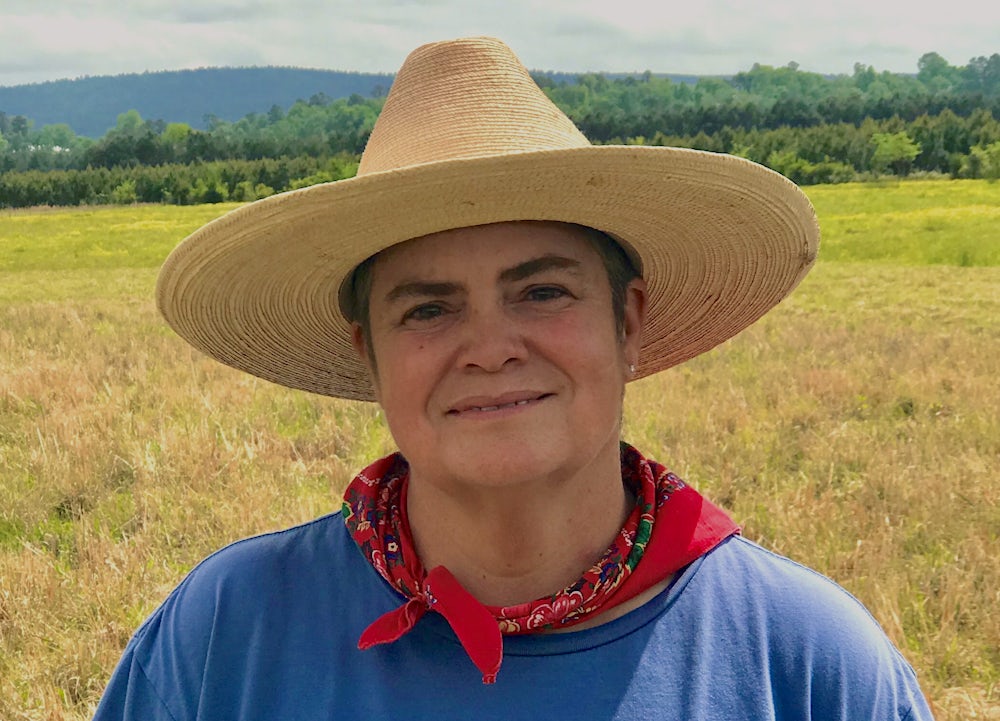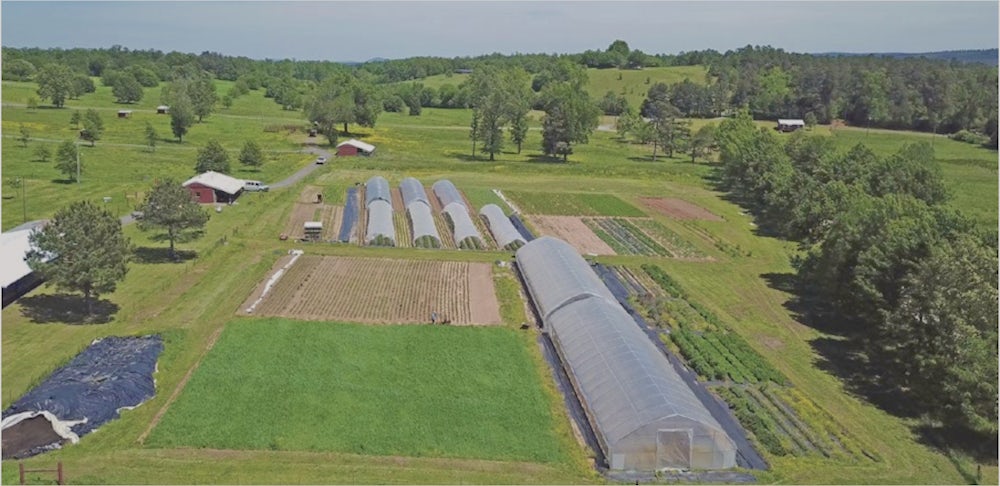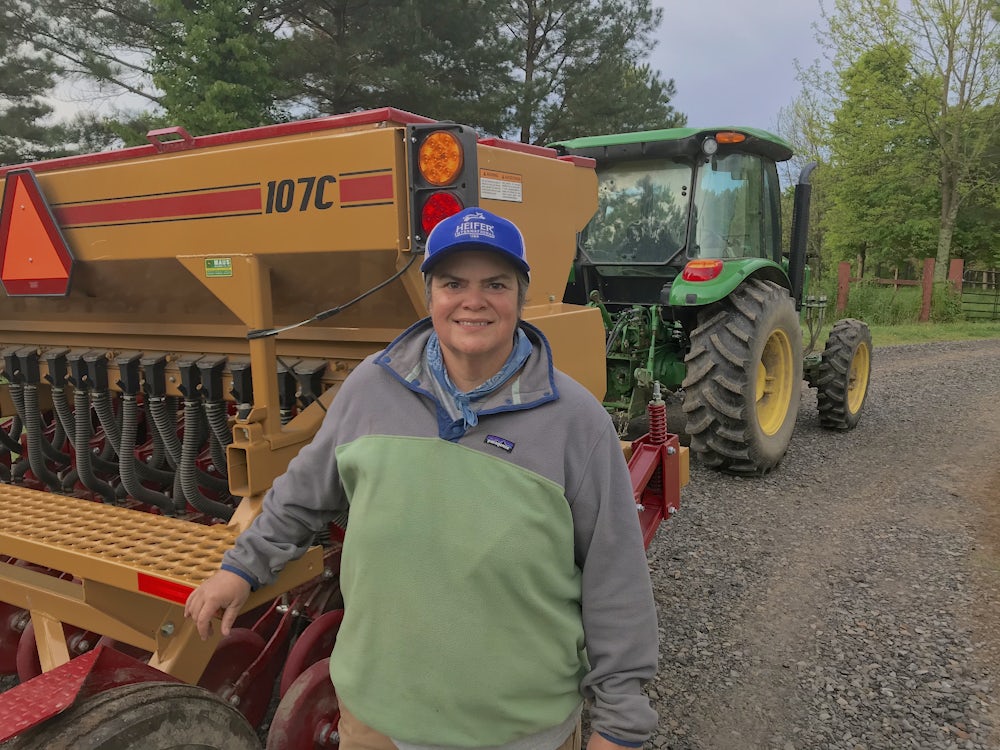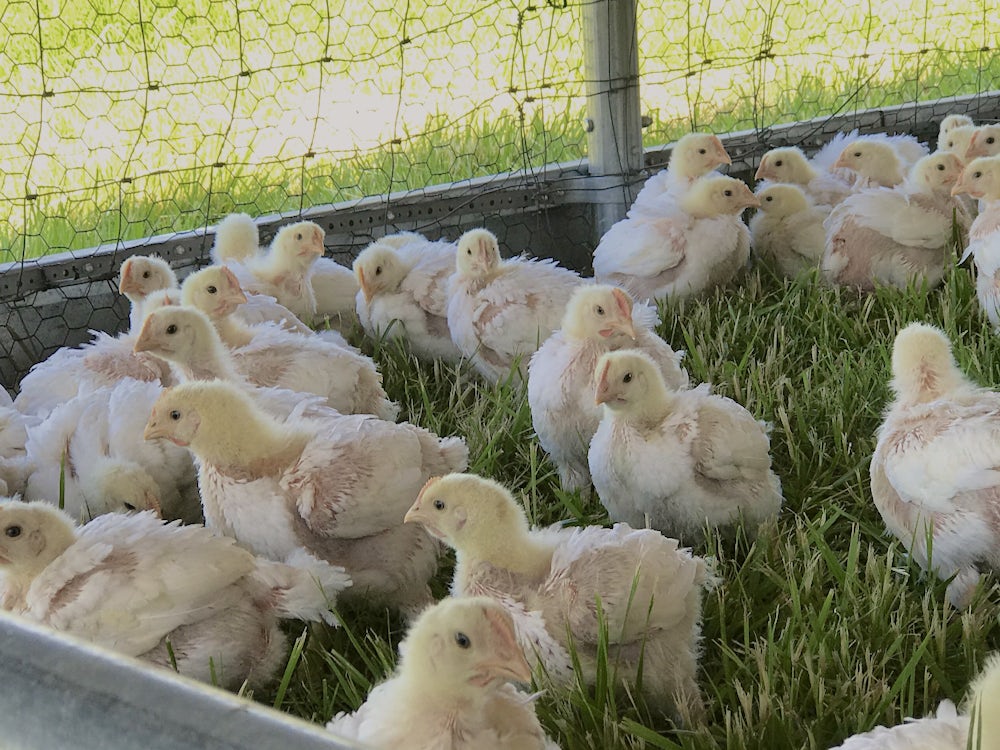Whenever she can, Donna Kilpatrick rises before the sun and makes her way to the low-lying cattle pastures along the Fourche La Fave River at Heifer Ranch. It has become one of her favorite ways to start a day.
“I love to go down into the bottoms [to] check on the cattle and the land and watch the sun rise,” Kilpatrick said. After 25 years of farming in places from Massachusetts to Ecuador, Kilpatrick knows a thing or two about the connections between a farmer and livestock, and livestock and the land.
Kilpatrick is putting that expertise to work as the manager and land steward of Heifer Ranch, a 1,200-acre working farm in Perryville, just 40 miles to the west of Arkansas’ state capital in Little Rock.

Once a place for visitors to learn about and experience a version of our global work, the Ranch keeps education at the core as Kilpatrick creates a living classroom for farmers learning about the symbiotic relationship between livestock and land. The work has put the Ranch at the heart of Heifer’s programming in the United States.
“One of my biggest goals for the Ranch is that we become a diverse, robust, vibrant destination — a living, breathing, learning lab,” Kilpatrick said.
It’s a big task, but one that is clearly already working.
A Deeply Rooted History
Heifer’s work in the United States began just one year after inception. While groups of farmers dubbed the Seagoing Cowboys began escorting livestock overseas to a war- ravaged Europe, Heifer was also working more locally.
Heifer made two small shipments to Arkansas in 1945, according to historian Peggy Reiff Miller. That was followed by one shipment to the Hampton Institute in Virginia in 1947, two to Kentucky in 1953 and 1954, and one to Ohio in 1955. One of the first full-fledged projects was a partnership with the Prentiss Institute, a historically Black junior college and vocational school in Mississippi.
The work in the United States has shifted depending on need and circumstance. During the 1990s, Heifer stepped in to help Navajo sheep farmers improve their commercial wool quality and diversify their herds. In the 2000s, we were in cities from Bend, Oregon, to Chicago, Illinois, developing urban gardens for immigrant communities and inner-city youth.
In 2014, Heifer began a transition of the work in the United States to align more closely to the work globally — with a focus on small-scale farmers. Grass Roots Farmers’ Cooperative supports, trains and provides markets for small- scale farmers, many of whom are living in marginalized communities. The cooperative connects these farmers’ products to a national direct- to-consumer market.
In total, Heifer has had a presence in more than 30 states over the last 75 years. No matter the focus, the work in the United States has been about building community, increasing access to healthy foods and strengthening economic security. That holds true today.
While Heifer Ranch has only been part of U.S. programming for three years, its history is also rich and varied. The land was purchased in 1971 following a gift of 2,000 Angus cattle. At that time, the land was used as a holding and quarantine center for animals to be distributed around the world.

Though its purpose has morphed multiple times — serving as a breeding center then shifting to a learning center after we began sourcing animals locally to be better suited to particular climates and environments — the Ranch has always been integral to educating others on the work we do.
Today, Heifer Ranch is the main training ground for Heifer USA, where current and beginning small-scale farmers learn regenerative agriculture, a method Kilpatrick knows can heal the land while simultaneously providing a living wage. The Ranch is also integral to the cooperative’s work, as it is a supplier of pasture-raised cows, sheep poultry and pigs.
“Our work of healing this land and training other farmers to do the same is just beginning,” she said.
Farming Innovation
Regenerative agriculture is a type of farming that heals degraded soils, improves ecosystem function and builds biodiversity. And it’s just one component of Kilpatrick’s overall approach to holistic farming at the Ranch.
“Holistic management considers the entire ecosystem with an emphasis on water infiltration and retention, increased soil health and organic matter, increased wildlife habitat, and an increase in land productivity. The Ranch practices all these methods and is integrating more as we learn,” she said.
Kilpatrick first learned how to farm as an undergraduate at Warren Wilson College in Asheville, North Carolina.
“I worked on the farm crew for my work assignment and fell head over heels in love with farming,” Kilpatrick said. “I spent any and every free moment that I had there, including fall, spring and summer breaks. I was the first female to be trained to operate the big tractors. I worked with the pigs and beef and did extensive field work while I was there.”

All these years later, she’s continuing that love of learning and training to become a Savory Institute Accredited Professional, or a trainer and implementer of holistic management practices. She and the other farmers at the Ranch are simultaneously turning Heifer Ranch into a Savory Hub, a site that offers regional training, events, special projects, consulting and research, she said.
Savory is a global network of farms working to address issues like desertification of grasslands and climate change. Heifer Ranch will be an accredited hub by 2023.
With the Ranch already practicing holistic methods and conducting farmer training last year, 700 current and aspiring farmers attended more than two dozen workshops and special events on topics including winter crop production, pastured poultry and forage management — it seemed like the natural next step.
“By becoming a hub, we become part of a network and community of innovative farms and ranches working through regenerative agriculture to reverse climate change,” Kilpatrick said. “The most important thing for me is that it’s a way to build relationships with some of the thought leaders within regenerative agriculture and have access to a distinguished network of peers and mentors.”

But becoming part of the Savory network isn’t the only innovative work happening at Heifer Ranch, Kilpatrick said. Kilpatrick and fellow farmers Christine Hernandez and Sean Pessarra use both high- and low-tech tools in their work, from soil testing for improved crop and forage production to drone technology to analyze pastures.
As for keeping tabs on the animals, there’s an app for that. Kilpatrick uses Herdly to keep records and track information on her herd of 35 South Poll cattle. Pessarra is designing several implements for two-wheel tractors to expedite harvesting and cultivation and is also developing seed-starting tools.
Blockchain technology is also part of the Ranch. The technology allows consumers to track their meat from farm to plate, and it’s just one of the ways Grass Roots is responding to consumer demands for transparency in the food system, Kilpatrick said.
While the Ranch has transformed its operations in just three years, Kilpatrick hopes this is just the beginning of bigger and better things to come.
“What I see in five years is a Garden of Eden in terms of what we’re doing here. I want to go out with a spade and kick over the soil and it be just like chocolate cake. We will train hundreds or thousands more farmers with our new credentials. Healthy livestock, tons of birds in the air, clean water, healthy people ... just abundance, actually.”